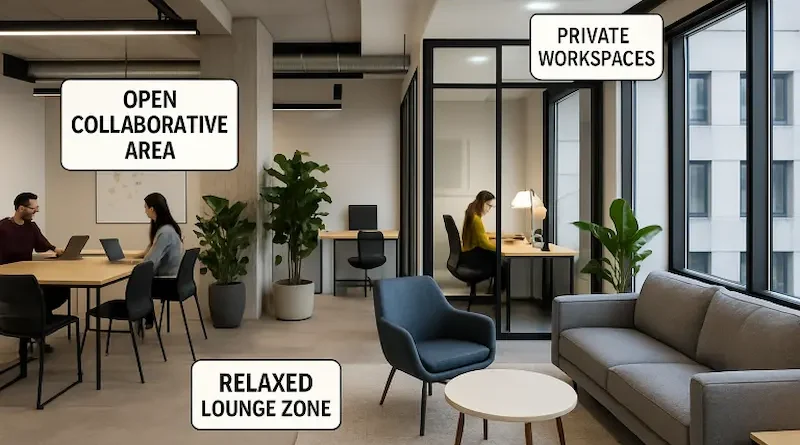How to Select a Workspace That Aligns With Your Company Culture
Understanding Your Company Culture
Selecting a workspace that reflects your organization’s core values begins with understanding your company culture. For some businesses, innovation and agility take center stage, while others thrive on collaboration or celebrating individual achievements. Accurately defining these cultural pillars acts as a compass when searching for a new coworking space near me or redesigning an existing office.
A clear understanding of your culture ensures that your workspace reinforces the attitudes, behaviors, and workflows that give your business a competitive edge. This alignment not only empowers teams but also attracts new talent who share your company’s values and vision.
Assessing Your Current Workspace
To determine if your physical environment is serving your intended purpose, thoroughly assess your current office setup. Solicit employee feedback, walk the floor, and observe day-to-day interactions. Does the space encourage teamwork, creativity, or focus? Are there areas that inadvertently stifle collaboration or hamper well-being? Honest evaluation uncovers what’s working—and what isn’t—so you can match your space to your company’s evolving needs.
An effective workspace assessment should consider the needs of different departments, the comfort of shared spaces, and the availability of quiet areas. According to Fast Company, a strategic review can also identify opportunities to adapt to emerging hybrid work trends and evolving remote work expectations.

Choosing the Right Office Layout
The physical arrangement of your workspace significantly influences how employees interact, innovate, and concentrate. Here’s how different layouts support distinct cultural attributes:
- Open floor plans break down barriers and invite impromptu conversation—ideal for organization cultures centered on transparency, speed of communication, and teamwork.
- Private offices or high-walled cubicles provide refuge for deep work, supporting cultures that prioritize individual achievement and concentration.
- Flexible spaces outfitted with wheeled desks, lounges, and collaboration pods enable employees to adapt their workflow, making them ideal for organizations that prioritize continuous innovation and project-based teamwork.
When selecting or rearranging a workspace, consider which layout will best amplify your business’s strengths, as described by Harvard Business Review’s analysis of office environments.
Integrating Brand Identity into Workspace Design
Infusing your company’s brand into the workspace cultivates a strong sense of purpose and belonging among employees. A vibrant color palette that matches your brand, walls featuring slogans or mission statements, and thoughtfully designed décor all reinforce your identity. This cohesion energizes teams and ensures clients or visitors instantly recognize your organization’s unique ethos.
Providing Flexibility and Choice
Modern employees are empowered when given the autonomy to decide where and how they work best. Forward-thinking organizations incorporate a mix of quiet rooms, collaborative zones, breakout spaces, and even remote-work options. This flexibility supports different working styles, minimizes distractions, and instantly accommodates shifts in workflow or team structure.
By equipping the office with various settings—such as soundproof booths for focus, open areas for brainstorming, and comfortable lounges for informal meetings—you can cater to both extroverts and introverts. Offering choice also enables better work-life balance and higher job satisfaction across the board.
Ensuring Leadership Accessibility
A workspace that encourages approachable and visible leadership fosters trust and transparency. Avoiding isolated executive offices and instead integrating management into shared spaces supports mentorship, open communication, and a sense of unity. Regular interactions between staff and leadership can strengthen company morale and foster innovative ideas that shape the organization’s future.
Considering Employee Well-being
Prioritizing health and happiness in workspace design often leads to higher engagement and retention. Elements such as abundant natural light, ergonomic furnishings, access to break areas, and wellness rooms significantly contribute to a positive environment. Supporting mental health can also include incorporating greenery, noise-reduction solutions, and opportunities for physical activity—each of which fosters a healthier, more productive workplace.
Multiple studies, including those featured in Forbes, demonstrate a direct correlation between investing in employee well-being and improved business performance.
Aligning Workspace with Business Goals
Your workspace is a strategic tool for achieving organizational objectives. If your business priorities include enhancing innovation, choose flexible layouts and creative zones. For improved collaboration, focus on open environments with plenty of shared spaces. As your company grows or shifts focus, revisit the workspace strategy to ensure ongoing alignment with business goals, client needs, and employee expectations.
Final Thoughts
The right workspace goes beyond aesthetics—it’s a core driver of culture and a key contributor to business success. Through a thoughtful blend of introspection, employee input, and strategic design, companies can craft environments that reflect their values and elevate their performance. Investing in a workspace that aligns with your culture empowers your team, strengthens your brand, and positions your business for sustainable growth.
Visit the rest of the site for more interesting and useful articles.

